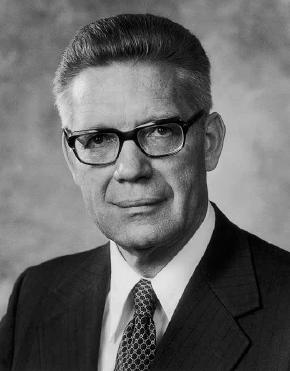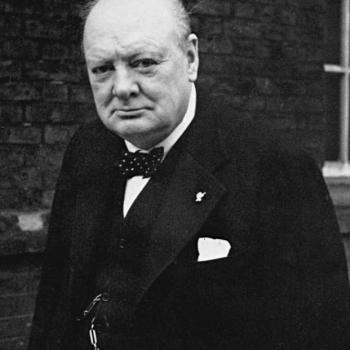[This is another addition to our ongoing General Conference Odyssey — which project you can also check out via our facebook page. To learn a little about the reasons which motivated this project, you can visit this article at Meridian Magazine.]
Bruce R. McConkie raises the question, “How to Worship,” and answers it in a very practical vein:
In other words, true and perfect worship consists in following in the steps of the Son of God; it consists in keeping the commandments and obeying the will of the Father to that degree that we advance from grace to grace until we are glorified in Christ as he is in his Father. It is far more than prayer and sermon and song. It is living and doing and obeying. It is emulating the life of the great Exemplar.
To worship the Lord is to walk in the Spirit, to rise above carnal things, to bridle our passions, and to overcome the world.
It is to pay our tithes and offerings, to act as wise stewards in caring for those things which have been entrusted to our care, and to use our talents and means for the spreading of truth and the building up of his kingdom.
To worship the Lord is to be married in the temple, to have children, to teach them the gospel, and to bring them up in light and truth.
It is to perfect the family unit, to honor our father and our mother; it is for a man to love his wife with all his heart and to cleave unto her and none else.
To worship the Lord is to visit the fatherless and the widows in their affliction and to keep ourselves unspotted from the world.
It is to work on a welfare project, to administer to the sick, to go on a mission, to go home teaching, and to hold family home evening.
To worship the Lord is to study the gospel, to treasure up light and truth, to ponder in our hearts the things of his kingdom, and to make them part of our lives.
It is to pray with all the energy of our souls, to preach by the power of the Spirit, to sing songs of praise and thanksgiving.
To worship is to work, to be actively engaged in a good cause, to be about our Father’s business, to love and serve our fellowmen.
It is to feed the hungry, to clothe the naked, to comfort those that mourn, and to hold up the hands that hang down and to strengthen the feeble knees.
To worship the Lord is to stand valiantly in the cause of truth and righteousness, to let our influence for good be felt in civic, cultural, educational, and governmental fields, and to support those laws and principles which further the Lord’s interests on earth.
To worship the Lord is to be of good cheer, to be courageous, to be valiant, to have the courage of our God-given convictions, and to keep the faith.
It is ten thousand times ten thousand things. It is keeping the commandments of God. It is living the whole law of the whole gospel.
To worship the Lord is to be like Christ until we receive from him the blessed assurance: “Ye shall be even as I am.” (My emphasis)
That’s a lot to include under “worship,” isn’t it – the whole of a Christian life, in effect, with a decided emphasis, one could say, on “works,” on the practical. To be sure, although Elder McConkie begins by presenting “living and doing and obeying” as “more than prayer and sermon and song,” he does come around eventually to prayer, preaching and songs of praise. But the emphasis is decidedly on the concrete aspects of a whole life for the individual, the family and the community.
This emphasis is so familiar to Mormons that we may not notice the significant alternative in the Christian tradition. That alternative understanding of “worship” drew upon a broadly Platonic understand of the divine in cultivating an inward condition of the soul qualify it for the blessed contemplation of God himself, understood as the transcendent ground of all reality. Despite varying degrees of emphasis on the affective condition of love, this traditional idea of worship bore the decidedly intellectualist stamp of its Platonic sources, in which the highest good was associated with union with a purely intellectual principle.
There are certainly many reasons for the absence among LDS of a distinctly intellectualist interpretation of Worship, the lack of emphasis on the cultivation of the proper inner order of the soul. One of them is certainly our decidedly concrete understanding of God’s being and therefore of his self-revelation to us humans. Joseph Anderson, in, “The Living Christ” offers a powerful summary of Latter-day visions of divinity in very concrete persons:
The Savior has also appeared to men at other times in this dispensation. As recorded in the 76th section of the Doctrine and Covenants, he appeared to Joseph Smith and Sidney Rigdon in vision in February 1832, and they bear witness of this occasion to the following effect:
“And now, after the many testimonies which have been given of him, this is the testimony, last of all, which we give of him: That he lives!
“For we saw him, even on the right hand of God; and we heard the voice bearing record that he is the Only Begotten of the Father—
“That by him, and through him, and of him, the worlds are and were created, and the inhabitants thereof are begotten sons and daughters unto God.” (D&C 76:22–24.)
This testimony from D&C 76 has always had particular power for me. Pondering it was an important part of my religious maturation when, as a high school student, I came to study this passage and first opened my mind and heart to the staggering possibility the Prophet and Sidney Rigdon had actually beheld the very Creator of the universe. If this was true, I knew at that moment, then this was the most important thing for the world, and for my own life.
Elder Anderson continues:
Others in this dispensation have seen the Lord. We are not restricted to the testimonies of Joseph Smith, Sidney Rigdon, Oliver Cowdery, and others who have seen the Lord in this day and time. We may and do know for ourselves that Jesus the Christ does live, that he is the mediator between us and the Father. We have that gift and power that Peter had when he said: “Thou art the Christ, the Son of the living God.” (Matt. 16:16.)
A people with a testimony of such momentous manifestations – a testimony that must depend finally on an individual’s own experience of some supporting spiritual witness[i] – will no doubt be little inclined to understand worship as centered on the cultivation of an inner state of soul. Still, some attention to the “soulful” dimension of worship might prevent us from conceiving worship as so “practical” that we risk becoming oblivious to the soulful aspect of spirituality. Elder Richard C. Scott gave excellent counsel in a number of conference talks concerning the cultivation of a state of soul conducive to worship and to revelation, and thus, to a holistic existence oriented towards eternal things. For example, there is this from October 2009:
Have patience as you are perfecting your ability to be led by the Spirit. By careful practice, through the application of correct principles, and by being sensitive to the feelings that come, you will gain spiritual guidance. I bear witness that the Lord, through the Holy Ghost, can speak to your mind and heart. Sometimes the impressions are just general feelings. Sometimes the direction comes so clearly and so unmistakably that it can be written down like spiritual dictation.
Besides the “practical” and the “contemplative” options I have noted, there is yet a third alternative understanding of “worship” that deserves mention here, since it is increasingly attractive to some Latter-day Saints with intellectual aspirations. I refer to the idea that emphasizes “grace” in such a way as to depreciate the emphasis on practical works, but without drawing upon a substantial idea of the soul and its inner cultivation. This alternative tends toward an attitude of aesthetic sublimity and quasi-Buddhist passivity. To the degree that it translates into any definite action, such action would aim at generic “humanitarian” benefits, free of all association with any particular idea of the human good or any unpopular commandments. The new theology of grace certainly has no taste for the rhetoric of “rising above carnal things” or “bridling our passions,” especially since such an emphasis on the moral dimension of worship leads right to the cultural-political element we have seen in McConkie’s view: “To worship the Lord is to stand valiantly in the cause of truth and righteousness, to let our influence for good be felt in civic, cultural, educational, and governmental fields, and to support those laws and principles which further the Lord’s interests on earth.” But can worship, or grace, retain any meaning, practical or contemplative, when severed from any substantial understanding of the good, human and divine?
[i] Pres. Hugh B. Brown, “This Same Jesus,” from this same last October 1971 conference session: “I want to tell you, my brethren and sisters, as is my calling as a witness of Christ, that I too know, and I know it from the same source that Peter knew it, for flesh and blood have not revealed that knowledge unto me, but our Father which is in heaven. And from the bottom of my heart I say to him and to you, as I think back over that trip through the Holy Land, “Thou art the Christ, the Son of the living God,” and I know it as I know that I live.”
Other posts from
- On the Inevitability of Worship (By Nathaniel Givens at Difficult Run)
- Worshiping the True and Living God (By Daniel Ortner at Symphony of Dissent)
- “[G]o and do” (By Michelle Linford at Mormon Women)
- Living by Power—A Woman of God (By Silver Rain at The Rains Came Down)












